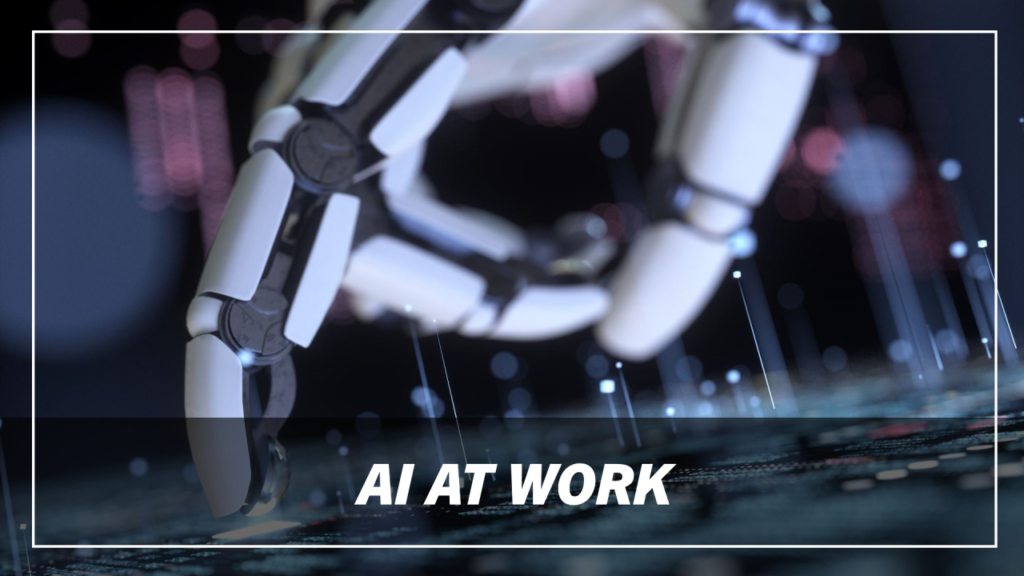AI at Work Is Here

The 2024 Work Trend Index Annual Report by Microsoft and LinkedIn, titled “AI at Work Is Here. Now Comes the Hard Part,” examines the rapid integration of artificial intelligence (AI) in the workplace and its implications for employees and leaders. It delves into the rapid adoption of AI in workplaces, its transformative potential, and the challenges leaders and employees face in harnessing this technology. The report highlights research findings, statistics, and actionable insights to help organizations navigate the AI revolution.
Key Findings:
- Widespread AI Adoption:
- Employee-Led AI Integration:
- Leadership Challenges:
- AI’s Impact on the Labour Market:
The Microsoft and LinkedIn 2024 Work Trend Index report provides a fascinating snapshot of how artificial intelligence (AI) is reshaping the workplace at an unprecedented pace. It captures the duality of AI adoption—an extraordinary opportunity for transformation paired with significant challenges that organizations and individuals must overcome.
AI Adoption: A Rapid Evolution
The sheer speed at which AI has permeated the workplace—75% of knowledge workers actively using it—is both remarkable and indicative of its disruptive potential. What’s striking is that nearly half of these users began incorporating AI tools into their workflows within just the last six months. This underscores not only the accessibility of AI tools but also their perceived utility. The research paints a clear picture: AI is no longer a futuristic concept; it is an immediate force driving productivity, creativity, and satisfaction.
However, the fact that most employees are bringing their own AI tools to work (BYOAI) reflects a gap in organizational strategy. Employees are taking the lead in AI integration, often without formal guidelines or support from their employers. This signals a missed opportunity for companies to institutionalize AI adoption in a way that aligns with their objectives and addresses potential risks.
The Leadership Conundrum
The findings highlight a troubling disconnect between leadership’s acknowledgment of AI’s importance and their preparedness to integrate it effectively. While 79% of leaders see AI as critical to competitiveness, the lack of clear strategies (reported by 60% of leaders) raises concerns about whether organizations are equipped to harness AI’s full potential. Leaders must not only embrace AI but also champion a structured approach to its implementation.
Moreover, the report’s insight that leaders struggle to measure AI’s productivity benefits (59%) points to a broader challenge: the need for robust metrics and tools to evaluate AI’s impact. Without these, the risk of disillusionment with AI investments looms large.
The Workforce’s Changing Reality
The evolution of skills in the AI era is an undeniable reality. The finding that 82% of leaders expect AI to create the need for new skillsets is a wake-up call for organizations and individuals alike. It is heartening to see AI aptitude becoming a significant hiring criterion, with 66% of leaders valuing it on par with experience. This signals a broader shift in how talent is evaluated and cultivated.
However, the report also highlights an undercurrent of anxiety among employees. The hesitation to disclose AI use for critical tasks (52%) suggests a stigma around AI reliance, which could stem from fears of being perceived as redundant or overly dependent on technology. Organizations need to foster a culture that normalizes and celebrates AI usage as a tool for empowerment rather than replacement.
AI’s Promise and Pitfalls
The promise of AI lies in its ability to complement human capabilities. The report’s findings around time-saving, focus enhancement, creativity boosting, and job satisfaction reflect AI’s potential to make work more meaningful and engaging. However, these benefits will remain unrealized unless organizations address the ethical, strategic, and cultural challenges of AI adoption.
The BYOAI trend is both a strength and a vulnerability. On the one hand, it demonstrates the democratization of AI, enabling workers to access tools that fit their unique needs. On the other, it highlights a lack of organizational control and oversight, which could lead to inconsistent practices or ethical breaches. Leaders must strike a balance between encouraging innovation and ensuring compliance.
Recommendations and the Road Ahead
The report rightly emphasizes the need for clear AI strategies, ethical guidelines, and robust upskilling initiatives. The focus on AI literacy is particularly important, as it ensures that employees across all levels can leverage AI effectively. Ethical AI practices and transparency are non-negotiable, as they build trust among employees and stakeholders.
Leaders must also reimagine roles and responsibilities in the AI era. Rather than fearing job displacement, the focus should be on upskilling and reskilling to prepare workers for new opportunities. This is an opportunity to elevate human potential, enabling individuals to focus on higher-order tasks while delegating repetitive or mundane activities to AI.
Conclusion: The Hard Part Begins
The research findings reflect a critical juncture in the AI revolution. The technology’s potential is undeniable, but its integration requires deliberate effort. Leaders must address gaps in strategy, measurement, and culture to unlock AI’s transformative power. At the same time, employees must embrace continuous learning to remain relevant in an AI-driven world.
Ultimately, the success of AI in the workplace hinges on a collaborative approach—where organizations and individuals work together to navigate this new frontier. AI is not a panacea; it is a tool. How we wield it will define the future of work.






Responses